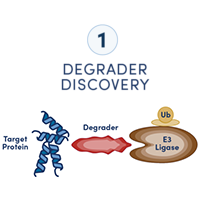Tools for Proximity-Induced Targeted Protein Degradation
Proven Solutions to Increase Productivity in Your TPD Workflow
Get the trustworthy tools and support you need to move your targeted protein degradation (TPD) project forward. CST offers a comprehensive suite of platform-compatible, application-validated tools to answer critical questions at every stage of TPD drug development. And our in-house manufacturing means you can count on reliable supplies.
With an unmatched range of top-tier products backed by technical rigor, CST® solutions help reduce risks in assay implementation, increase data confidence, and improve productivity on platforms you already use.












